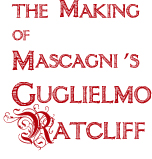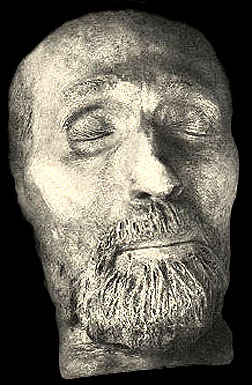 |
It has already been remarked that Heine later referred to this work as a "dramatic ballad." This is undoubtedly in reference to the almost total narrative technique employed throughout. It is organized with an almost Wagnerian sense of stagecraft: i.e., each act consists of narrative until one strong action is presented at its close.
The analogy with the ballad form is easily apparent: the action is rarely presented, always narrated, and this generally in dialogue. Heine used the old Scottish ballad "Edward" as a springboard for the plot. Indeed, the play can be seen as an intricate series of boxes within boxes. At the center lies the "Edward" ballad (only partially presented with a few random lines); outside of this is the story of Schön-Betty and Edward; and surrounding the two inner boxes is the main action of the drama, that of Maria and William Ratcliff. For a truly Nabokovian touch (see his introduction to [Mikhail] Lermontov's A Hero of Our Time for his similar explanation of the form of that novel) one can add Heine's own autobiographical facts, and, to round out the circle, it is conceivable that the spectator will add his own personal dimension. To say that this elaorate construction is mere chance it to deny the artist in Heine. For after all, is not one of the strongest and most suggestive symbol of the work a mirror? The play was first published in 1823, appearing at the same time as the far more famous Lyrical Intermezzo (later collected in the Buch der Lieder). It was never performed. In 1851 Heine republished the play, prefacing it with the following: "I wrote William Ratcliff in Berlin, under the lime-trees, during the last three days of January, 1821, while the sun illuminated the snow-covered roofs and the sadly bared trees with a certain lukewarm and kindly disposition. I wrote it in one sweep and without a draft. While I was writing I had a sensation as if I were hearing a rustling above my head, like the flapping of a large bird's wings. When I spoke to my friends about it, the young poets of Berlin, they looked at each other strangely and assured me unanimously that they had never experienced anything like that when writing."With the increase in Heine's European fame, his work came to be translated into many languages and eventually this early work was known in Italy through the Italian translation of Andrea Maffei. | ||
| |||
To the Libretto. |

